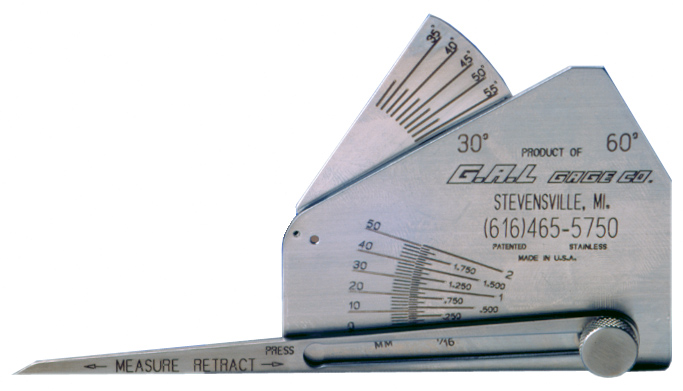Fillet Weld Layout Strategies: Enhancing Joint Efficiency and Aesthetics for Structural Stability
In the world of architectural engineering and construction, the importance of fillet weld design strategies can not be overemphasized. By carefully considering factors such as weld account optimization, material selection, joint prep work methods, welding process performance, and aesthetic enhancement engineers, approaches and producers can accomplish an unified equilibrium between capability and appearance in their bonded frameworks.
Weld Account Optimization


Attaining an optimal weld profile entails a thorough factor to consider of variables such as product density, joint arrangement, welding setting, and preferred welding speed. In addition, the option of proper welding criteria, such as voltage, present, and take a trip speed, is fundamental in regulating the shape and measurements of the fillet weld. Using advanced welding strategies, such as pulse welding or robot welding, can even more fine-tune the weld account to satisfy specific layout demands and top quality standards.
Essentially, weld profile optimization is a basic element of fillet weld style that straight influences the total performance and integrity of welded joints in structural applications.
Material Choice Considerations
When taking into consideration material option for fillet weld style, the compatibility of the base steels is a critical aspect influencing the architectural honesty of the joint. It is necessary to pick products that not only bonded together properly yet also have comparable mechanical buildings to make sure the lots is evenly dispersed in between the weld and the base metals. Welding products with greatly various residential or commercial properties can cause issues such as tension focus, early joint failure, or fracturing.
Additionally, the atmosphere in which the bonded framework will operate have to be considered when choosing products. Variables like corrosion resistance, temperature level changes, and exposure to chemicals can all affect the durability and performance of the weld joint. By choosing products that are suitable for the desired application and environment, the total durability and dependability of the bonded joint can be significantly boosted.
Therefore, extensive consideration of product compatibility and ecological aspects is paramount in making sure the weld joint's toughness, durability, and overall structural integrity.

Joint Prep Work Techniques
Taking into consideration the critical function material choice plays in ensuring the structural integrity of fillet weld joints, it is vital to execute specific joint preparation methods that optimize the link between the base steels. Joint prep work is an important step that directly influences the quality and toughness of the weld. One fundamental method is the cleansing of base metals to eliminate any kind of contaminants like rust, oil, or paint that might endanger the weld's integrity. This can be accomplished with approaches such as grinding, wire brushing, or chemical cleansing.
In addition, correct fit-up of the joint is vital to guarantee uniform distribution of the welding material and avoid issues like incomplete penetration or too much build-up. Beveling the sides of the base steels can produce a groove that enables much deeper weld infiltration and a more powerful bond. Furthermore, tack welding the elements in location before the last weld aids keep placement and decreases distortion throughout the welding procedure. By thoroughly complying with these joint prep work strategies, welders can boost the general performance and appearances of fillet weld joints while guaranteeing structural soundness.
Welding Process Performance
Effective welding procedures are important for attaining optimal efficiency and top quality in fillet weld fabrication. Procedures like gas metal arc welding (GMAW) and flux-cored arc welding (FCAW) are commonly utilized for fillet welds due to their flexibility and speed.
Additionally, guaranteeing appropriate devices arrangement and maintenance is vital for efficient welding. Normal calibration of welding machines, examination of consumables, and maintenance of welding lanterns can avoid downtime and revamp, ultimately saving time and resources. Furthermore, like this using proficient welders with knowledge in the details welding procedure being made use of can significantly impact effectiveness. Well-trained welders are a lot more proficient at readjusting specifications, fixing problems, and preserving constant weld high quality.
Aesthetic Improvement Techniques
To optimize the high quality of fillet weld fabrication, carrying out aesthetic improvement approaches can play an important function in making certain accuracy and precision throughout the welding process. Aesthetic help such as weld size gauges and magnifying lenses can help in examining weld profiles and measurements properly. By incorporating these aesthetic enhancement techniques into the welding process, welders can achieve not just structurally audio fillet welds yet additionally aesthetically appealing results that meet industry criteria.

Conclusion
To conclude, enhancing fillet weld layout entails careful factor to consider of weld profile, material option, joint preparation, welding process performance, and visual enhancement approaches. By applying these techniques, architectural integrity can be enhanced while likewise attaining aesthetic charm. It is necessary to prioritize both efficiency and looks in fillet weld design to ensure the total quality and longevity of the joint.
By meticulously thinking about variables such as weld account optimization, material option, joint prep work strategies, welding process efficiency, and visual enhancement fabricators, methods and engineers can achieve navigate to these guys a harmonious balance between capability and look in their bonded frameworks.In the world of fillet weld layout, maximizing the weld account plays a vital function in ensuring structural integrity and performance. The weld account, which consists of the size and form of the weld cross-section, straight influences the circulation of stress and anxiety and load-bearing ability within the joint. It is essential to choose products that not only weld with each other properly but also possess comparable mechanical homes to guarantee the load is equally dispersed between the weld and the base steels - Gauge Fillet Weld.In verdict, optimizing fillet weld style entails careful consideration of weld profile, product choice, joint preparation, welding procedure see here now effectiveness, and visual improvement techniques
Comments on “Improving Your Welding Skills: Focus on Gauge Fillet Welds”